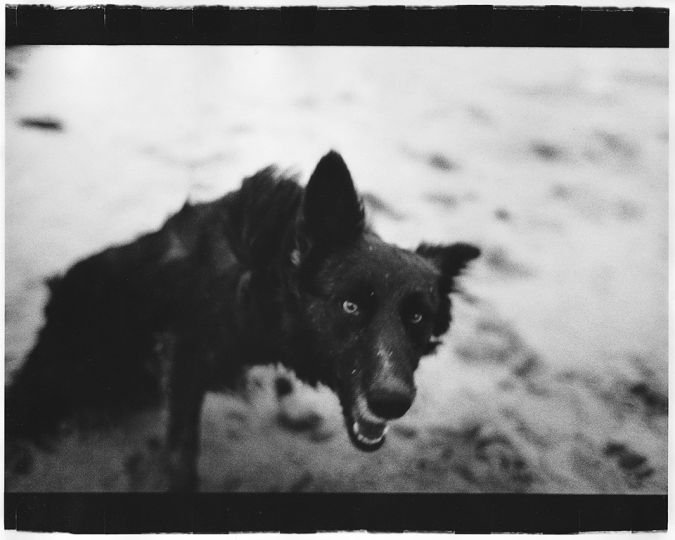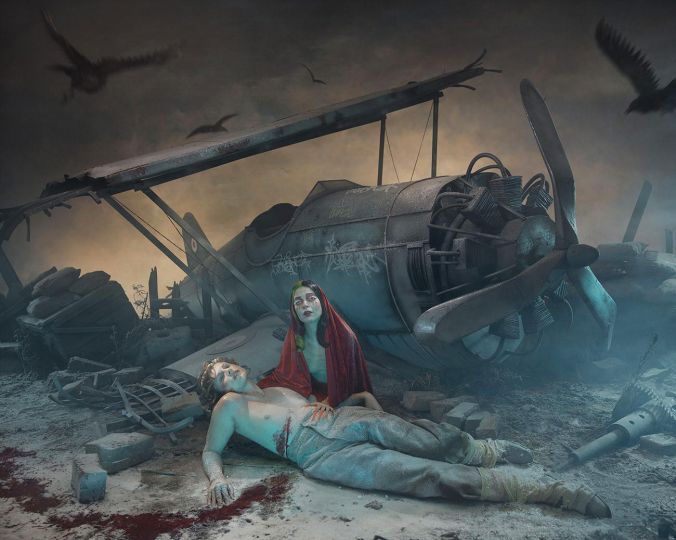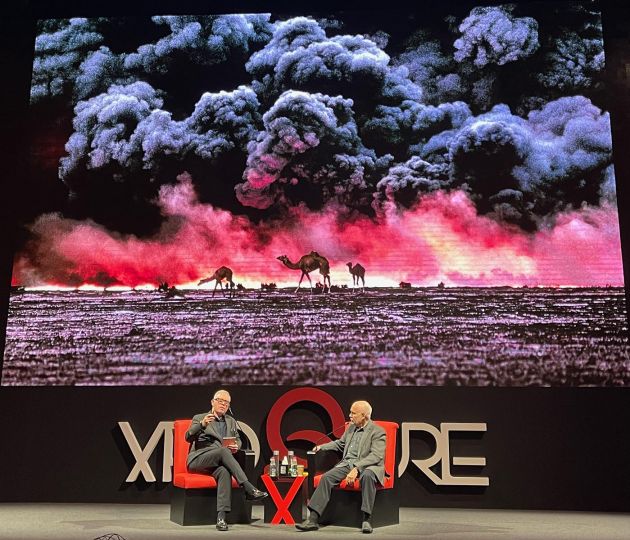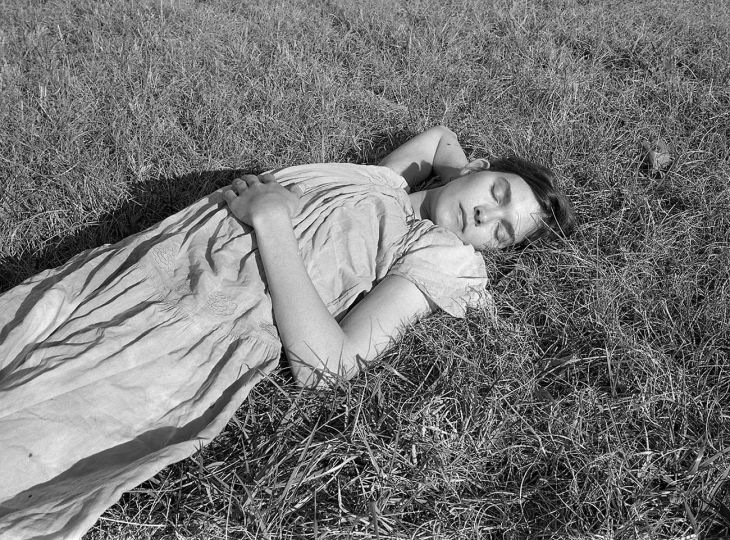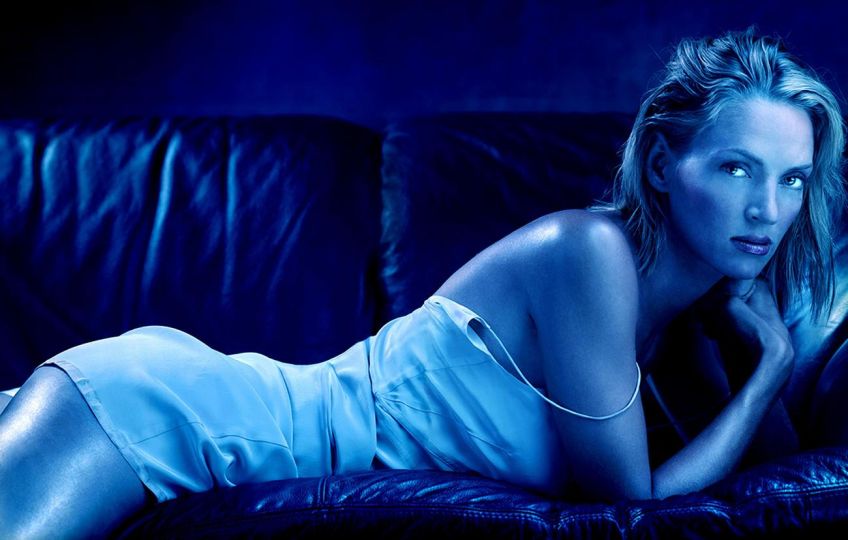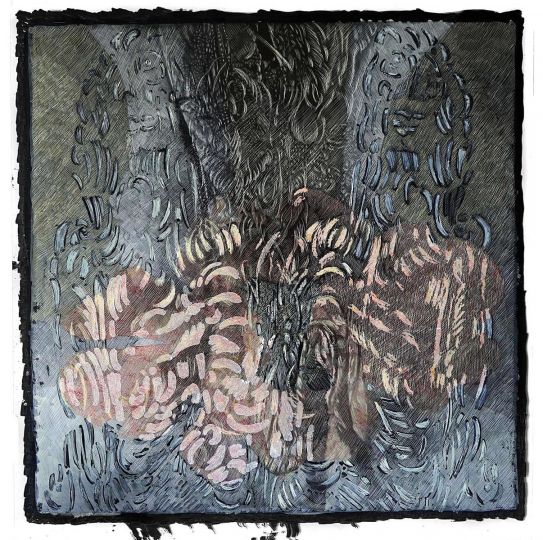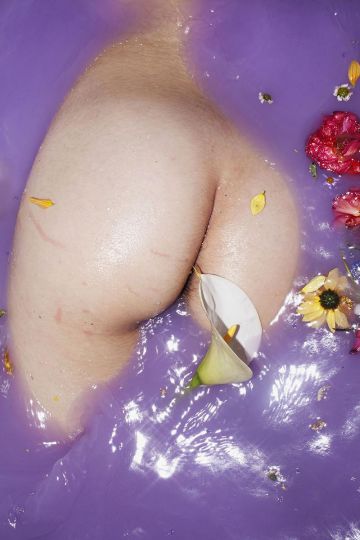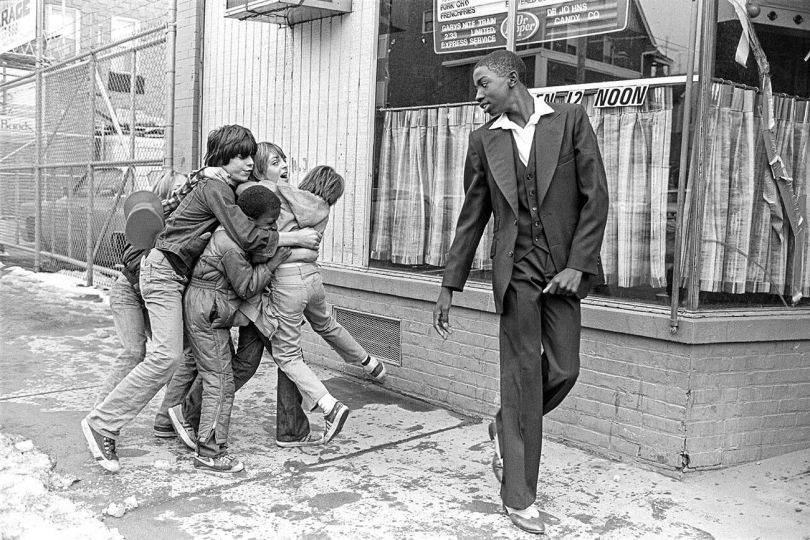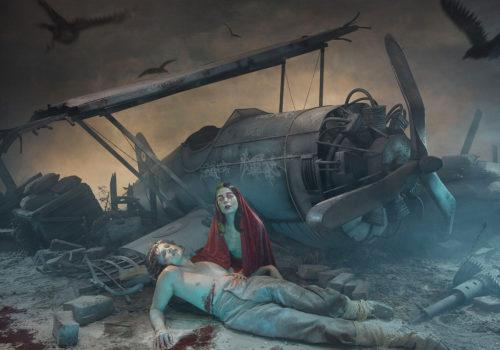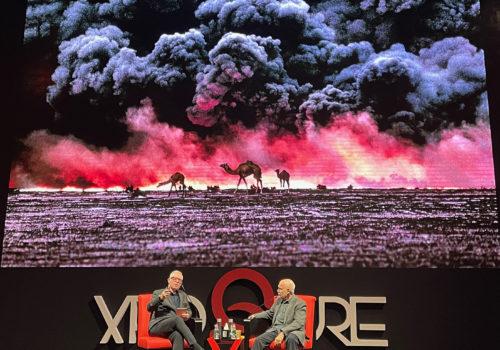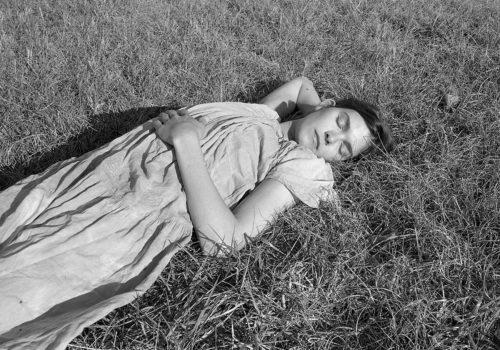A range of animals unfolds in numerous photographs… This selection and the theme tackled here is not exhaustive, but offers a journey past the many faces of ferocity.
A wolf comes out of the depths. Scrawny, deformed, its coat scruffy, a body beaten with cracked ribs that bears on a feverish leg with difficulty… The mouth open from which emerge some sharp teeth and above, a look that fixes you with what’s in it, a look that seems to say, “This is me. Look how far the face of savagery can go”. In all its phantasmagorical representation, to the almost exact portrait of the big bad wolf of children’s nightmares.
This sickly black dog in Anders Petersen’s work. Perhaps it’s the best archetype we can make of the beast in photography? It summons up the word “beast” that come from the Latin “bestia” and draws its etymology from the words “belua” and “ferus” of which one can mean “monster” and the other “savage, cruel, fierce”.
Appearance
First of all, the beast looms up. Because it is wild, it surprises us with its sudden appearance. It is a brutal appearance in the quiet orderliness of a landscape. Such as in Josef Koudelka’s shot of the ferocious dog in the snowy Sceaux Park. The dog is a fleeting intrusion full of movement that stares at the photographer who in turn focusses on the animal. Impossible to figure out the look. The mastiff seems to scrutinise you, its paw raised, but you don’t see its eyes. Its face is opaque, uncertain, fierce. It frightens because it is uncontrollable: you don’t know what it’s looking at, where it’s going…. It’s a moving and potentially dangerous body that can bite you in a single bound.
It is the same with a photograph taken by Santu Mofokang. A horse grazing in the middle of a dark wood. Its face hidden by a tuft of long grass and we can only see the shape of its abdomen. Without a face, it becomes an abstract shape that could have a monster’s head and turn towards us with the treat of devouring us. Its wildness is reinforced by its environment: nomadic, wild, dark and worrying. The photographer seems to have gone into a den where he has to walk on tip-toe in order not to disturb the peace of its occupant and is afraid of a furious, uncontrollable and cruel response.
Capture
In the face of these wild forces, these mountains of muscle and horrifying fangs, sometimes the human desire to capture is born. Photographic captures that expose real captures: the animal put into human hands. For example, the chains that muzzle the hyenas captured by Pieter Hugo in Africa. In his book Hyena, the photographer was interested in the animal showmen who hang about the country’s slums and vacant lots. The hyena is perhaps one of the most monstrous animals in existence. A kind of illusion that calls to mind the hunchback’s ugliness with its curved back and its head that resembles a bat’s. Perhaps that’s why it fascinates so much that there could be a showmen’s market. Even more troubling in Pieter Hugo’s series Hyena are the images not of hyenas, but of monkeys, chained up in the same way. In some photographs the macaques are dressed in football jerseys, fitted to size, as if they have been reduced to dolls, objects for show. If Pieter Hugo’s photographs often highlight the amazing closeness the showmen have with their animals – where, no doubt, they sometimes live in surprisingly friendly complicity – they don’t forget to stress the hold man has over the animal, the leash that the master holds in his hand and gives him power over the beast’s fate.
Prison
This confinement that the human being does to the wild is also powerfully shown by Diana Michener in her series Anima Animals. While she was in India, fleeing the noise of the city, the photographer took refuge in a zoo. She was interested in the animals confined in cages. Returning to France, she continued her work in the zoo at the Jardin des Plantes and in other animal parks. She puts us in the position of a visitor who looks at the beast turning round and round in a small space. A leopard that seems to be cramped behind bars, an elephant that seems to have difficulty breathing in the tiny bubble that he has been allotted and even a lion, in front of which it’s difficult not to discern a certain desolation while his majestic body, used to running in the immensity of the savannah, stays stuck behind bars…
Human beasts
With humankind’s gaze on the animal comes humankind’s gaze at its own bestiality. Perhaps it’s not surprising that the sickly black dog of which we spoke at the beginning of this little anthology comes from Anders Petersen. If beasts – in the literal sense – are very present in his work, human bestiality inundates his images. So an elderly couple embrace each other so greedily that we have the impression that they want to devour each other, a young woman who eats an ice cream with the eagerness of a wild animal biting into a piece of meat, and another young woman, fallen back on the edge of a bed, legs apart, as if she just had sex. A photograph of human bestiality that also characterises part of Antoine d’Agata’s work. In the same vain as Francis Bacon’s fragmentation of the body, the photographer draws on the repertoire of cruelty. For example, the face of a woman, her face pressed against the mattress, clenching her teeth as if she were biting the emptiness. This photograph by Antoine d’Agata stretches the young woman’s jaw and makes it into a kind of beast bellowing in pain while finding herself the bearer of cruelty. As in the print of a naked body lying on the edge of a bed, like the edge of death whose sex isn’t known and whose face isn’t seen, but only a skull without hair. Beside her, the red sheets are unmade and shaped like a chain of small waves on the sea of the bed, witnesses of past violence.
To reveal
But these works don’t judge. They have no moral pretention. The simply talk about this part of the human being that society sometimes tends to hide, that society sometimes rejects, that society sometimes refuses to see. Antoine d’Agata claims it as a political act: “I started to tell a story that goes against what we see on TV, that goes against different photographic traditions, and I want to go to the end of this story; to show whores who enjoy what they do, kind criminals, a deeper humanity, more complex”.[1]
A bestiality perhaps in an inevitable condition, particular to all human beings and all animals. Witness Michel Vanden Eeckhoudt’s images that mix up humans and animals in relationships where it is difficult to tell human from animal and vice-versa. When the animals have a human face, the humans sometimes have animal faces. He photographs, for example, a turtle whose head seems familiar to us while he immortalizes a man squinting his eyes like his dog that he holds in his arms and which strangely resembles him.
Great apes
But the beast’s human face achieves, without doubt, its highpoint in Isabel Munoz’s photographs in her series devoted to the great apes. Beasts on the way to extinction, celebrated here in photographs, they make us think of the portraits of American Indians that Edward Curtis made at the beginning of the twentieth century when the last were being massacred by the American colonists. In Isabel Munoz’s photographs, there is a gorilla that looks at us with a surprised air, hand on mouth, like the expression on Rodin’s Thinker; that looks at us as if we are objects of curiosity, a thing it really doesn’t understand or simply like a brother with which it tries, willy-nilly, to find fraternity – or bestiality
Jean-Baptiste Gauvin
Jean-Baptiste Gauvin is a journalist, author and director who lives and works in Paris.
[1] “I take photographs like an alcoholic”, interview with Frédérique Chapuis in Télérama, 17th November 2016.

